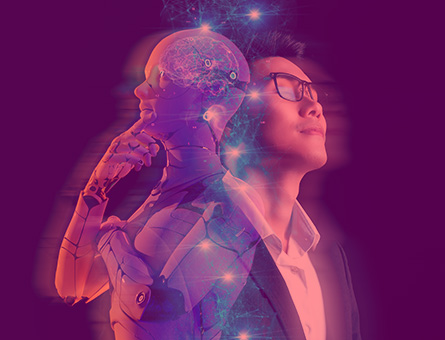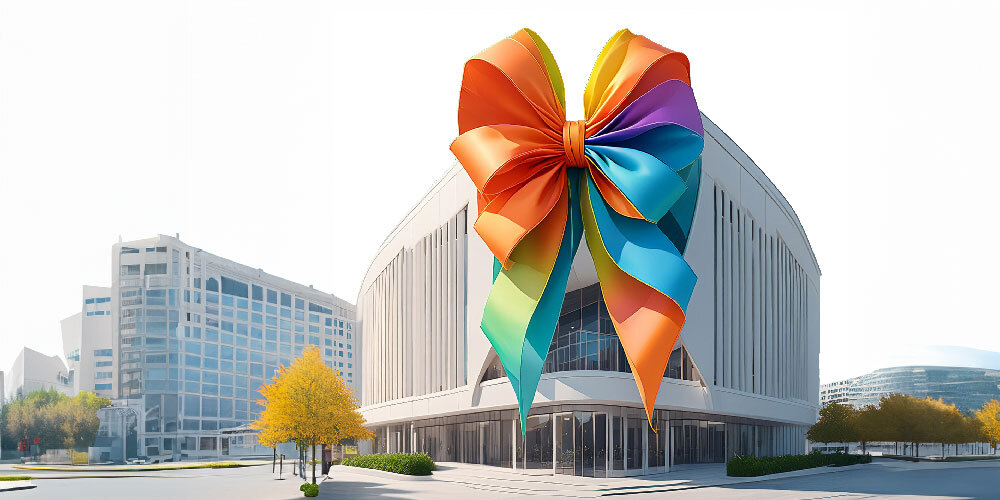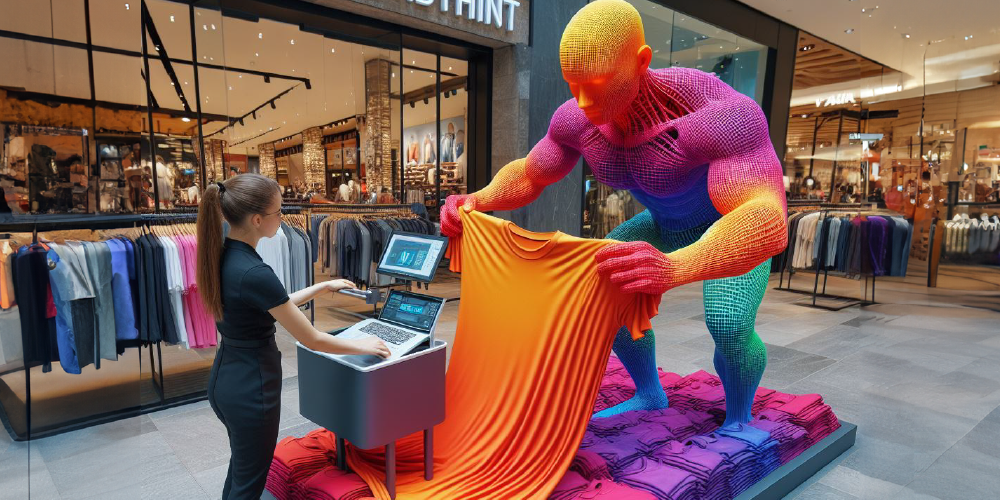The science of artificial intelligence (AI), which is expanding quickly, has the potential to completely change how we work, live, and interact with the environment. AI is advancing significantly in a number of areas, including the creation of images. AI-generated visuals are growing more lifelike, and they have the potential to revolutionize a variety of industries, from gaming and entertainment to healthcare and education. CGI stands for computer-generated images, which are digital images produced by computer graphics software. These photos, which might be 2D or 3D, employ a variety of modeling, texturing, lighting, and rendering techniques. CGI is used in a variety of industries, including animation, movies, video games, and advertising. It enables the creation of realistic and intricate images that conventional photographic or filmmaking methods could find challenging to capture. Additionally, CGI gives you creative flexibility and control so you may modify and edit the pieces to get the outcome you want.
Digital image processing has the following characteristics:
- It makes use of software, some of which are free
- It presents distinct visuals
Image enhancement is done via digital image processing to capture data through photographs. You can utilize it in many different fields. It makes digital image processing less complicated. It also helps people have a better quality of life.
Digital image processing has a few benefits:
- Reconstruction of images (CT, MRI, SPECT, and PET)
- Image resizing (Multi-plane, multi-view reconstructions)
- Quick image retrieval and storage
- Distribution of images quickly and with quality
- Controlled viewing (zooming and windowing)
However, digital image processing has certain drawbacks too. Firstly, it takes a great deal of time. Secondly, its price varies greatly depending on the system. Besides, it substitutes qualified people who could do the job.
How AI creates images

Deep learning algorithms are used in AI-generated graphics to learn how to come up with new ideas by analyzing large volumes of data. These algorithms can operate on enormous collections of already-existing images, such as pictures or artwork, and they make use of this information to discover patterns and features that can be used for the creation of new images. The visuals that are produced are frequently breathtakingly lifelike and have numerous uses. Artificial intelligence and machine learning algorithms are used in automatic picture editing to improve or change digital photos. This technology can be used in a variety of settings, including graphic design, film production, and photography. Colour correction, noise reduction, object removal, and image enhancement are just a few of the activities that can be done automatically while editing images. Using AI in image editing can significantly reduce the time and effort required to produce high-quality results and improve the editing process’s accuracy and consistency.
The entertainment industry is home to some of the most interesting uses of AI-generated imagery. Films, video games, and virtual reality experiences can all benefit from AI’s ability to produce lifelike 3D models of people and environments. These models may be produced considerably more rapidly and effectively than traditional ones, which require human painters to hand-paint every little detail. As a result, artificial intelligence-generated graphics are increasingly being used in popular films and video games.
Another area in which AI-generated images are making a significant impact is the healthcare sector. AI can create detailed images of the human body to diagnose and treat various conditions. For example, AI can create 3D models of the brain, which can diagnose and treat neurological disorders.
In addition to these applications, education, design, and many other fields use AI-generated images. For example, AI can create realistic images of buildings and landscapes, which architects and urban planners can use to design new cities and buildings. AI can also be used to develop educational materials, such as interactive diagrams and animations, to help students understand complex concepts.
Examples of AI Image generation tools:
- DALL-E:
DALL-E, developed by OpenAI, is a deep learning model that generates images from textual descriptions. It is capable of creating high-quality images from textual prompts that describe the desired image, even if the prompts are imaginative or abstract. DALL-E is trained on a massive dataset of images and text, which enables it to learn complex visual representations and generate images that are visually appealing and coherent.
- Stable Diffusion
Stable Diffusion Online is an advanced artificial intelligence (AI) image generation tool that utilizes cutting-edge diffusion models to generate high-quality images. This tool is designed to provide users with an intuitive and user-friendly interface for generating a wide range of images, including but not limited to, realistic photos, artwork, and abstract compositions. One of the standout features of Stable Diffusion Online is its stability. The diffusion models used in this tool are designed to generate stable images with consistent quality, reducing the likelihood of image artifacts or distortions commonly associated with other AI image generation methods.
New trends in Image editing

The process of editing and enhancing images has been completely transformed by automatic image editing. Automated picture editing software uses artificial intelligence and machine learning algorithms to swiftly and effectively change an image’s brightness, contrast, saturation, color, temperature, and sharpness. Some sophisticated software even has the ability to crop out undesirable subjects from a picture or add intricate filters and effects.
One of the main advantages of automatic image editing is that it saves time and effort compared to manual editing. It also allows non-professional users to achieve professional-looking results with minimal knowledge of image editing techniques. However, it is essential to note that automatic image editing is only sometimes perfect and may require some manual adjustments to achieve the desired outcome.
What is bulk image editing?

Bulk image modification is another application for AI-generated photos. It describes the method of simultaneously making changes to several photographs. For companies, photographers, and designers who need to swiftly and effectively edit a huge number of photographs, it is a useful tool. Users using bulk image editing software can update multiple batches of photographs at once in ways like cropping, resizing, color-correcting, adding watermarks, and more. Particularly when working on huge projects or managing large image collections, this programme speeds up productivity. Additionally, bulk image editing software helps ensure uniformity among all the photographs in a project, guaranteeing a polished appearance. Any professional who works with numerous digital photographs must learn how to edit large quantities of images.
Examples of AI-based Image editing tools:
- PixelBin:
Pixelbin is an online image editing platform that provides various image manipulation tools and features. It allows users to upload images and perform tasks such as cropping, resizing, color correction, filtering, and adding effects to images. Pixelbin is commonly used by photographers, graphic designers, and content creators who need to edit and enhance their images for professional or creative purposes. It offers a user-friendly interface and a range of editing options to cater to different image editing needs.
- FotorAI:
FotorAI is an artificial intelligence powered image editing tool developed by Fotor, a popular photo editing app. FotorAI utilizes advanced machine learning algorithms to automatically enhance and optimize images. It can analyze images and make intelligent adjustments to improve their overall quality, including adjusting exposure, color balance, sharpness, and noise reduction. FotorAI is designed to save time and effort for users who want to quickly enhance their images without manually adjusting each individual parameter.
AI-based image matching

AI-based image matching in eCommerce has revolutionized the way online retailers manage their product images. Using advanced computer vision techniques, AI algorithms can analyze and compare images to accurately match products, ensuring consistency and accuracy in product listings.
The generation of product catalogs is one of the primary uses of AI for picture matching. Retailers can submit a huge number of product photos, and artificial intelligence (AI) algorithms can automatically recognise and group related products based on their visual qualities, such as color, shape, and pattern. Retailers no longer need to spend hours manually classifying and arranging product photos thanks to this.
AI-based image matching’s ability to spot and highlight identical or similar product photos is a key additional benefit. This aids merchants in keeping duplicate products off of their websites, avoiding client confusion, and guaranteeing a smooth buying experience.
Furthermore, AI-based image matching also enhances visual search capabilities in eCommerce. Customers can simply upload an image or take a photo of a product they like, and AI algorithms can quickly match it with similar products in the retailer’s catalog. This provides a convenient and personalized shopping experience for customers, leading to higher conversion rates.
Examples of AI based image matching tools:
- Google Lens: Google Lens is an AI-powered image matching tool that can identify objects, landmarks, and text in images. It can be used through the Google Lens app or integrated into other Google products like Google Photos and Google Assistant.
- Amazon Rekognition: Amazon Rekognition is a cloud-based AI service that includes image matching capabilities. It can be used to compare images and identify similarities, such as matching faces in different images, or detecting objects and scenes in images.
- Clarifai: Clarifai is an AI-powered image recognition platform that offers image matching capabilities. It can be used to train custom models for specific image matching tasks, such as matching product images for eCommerce or identifying similar images for content moderation.
- TinEye: TinEye is an image matching tool that uses reverse image search technology to find similar images across the web. It can be used to identify image duplicates, track image usage, and discover visually similar images.
Conclusion
Artificial intelligence-generated images and digital image processing have made significant progress in recent years and have revolutionized various industries. The use of deep learning algorithms in AI-generated images has enabled the creation of realistic and detailed visuals that have applications in entertainment, healthcare, education, and many other fields. Additionally, automatic image editing and bulk image editing using AI have significantly reduced the time and effort required to produce high-quality images. While there are still some drawbacks, the benefits outweigh the drawbacks. With further advancements in AI and machine learning algorithms, we can expect even more exciting applications and developments in the future.





